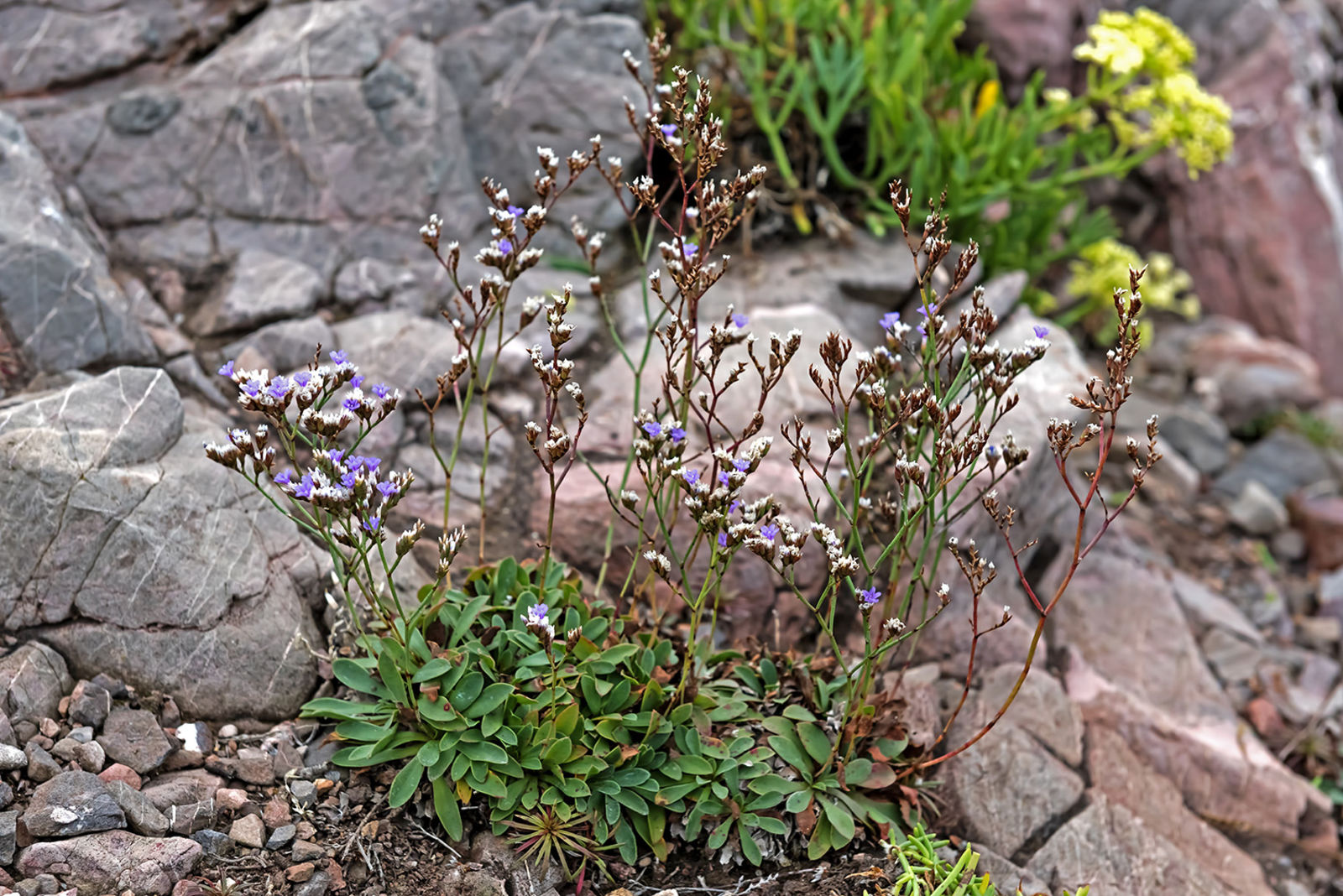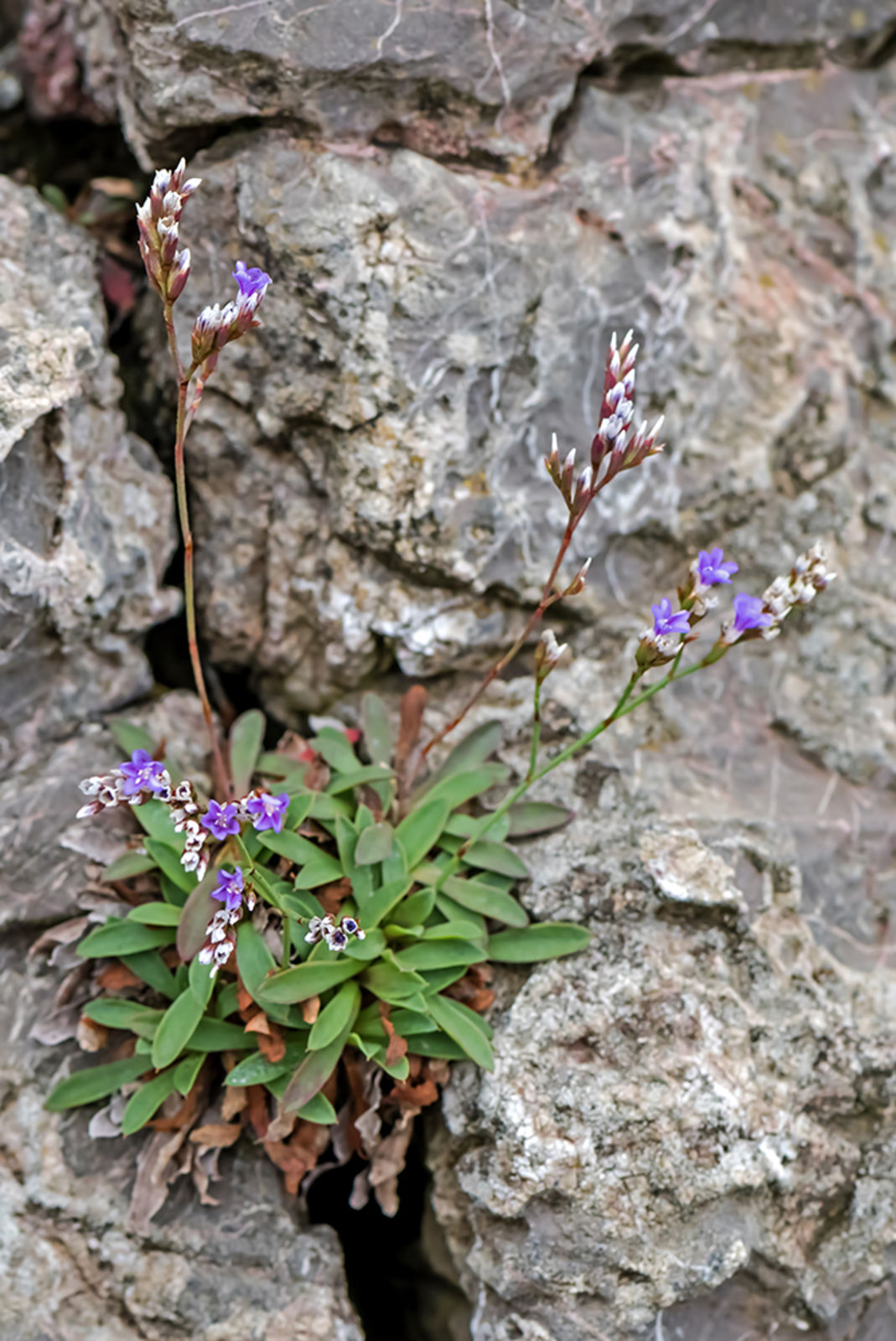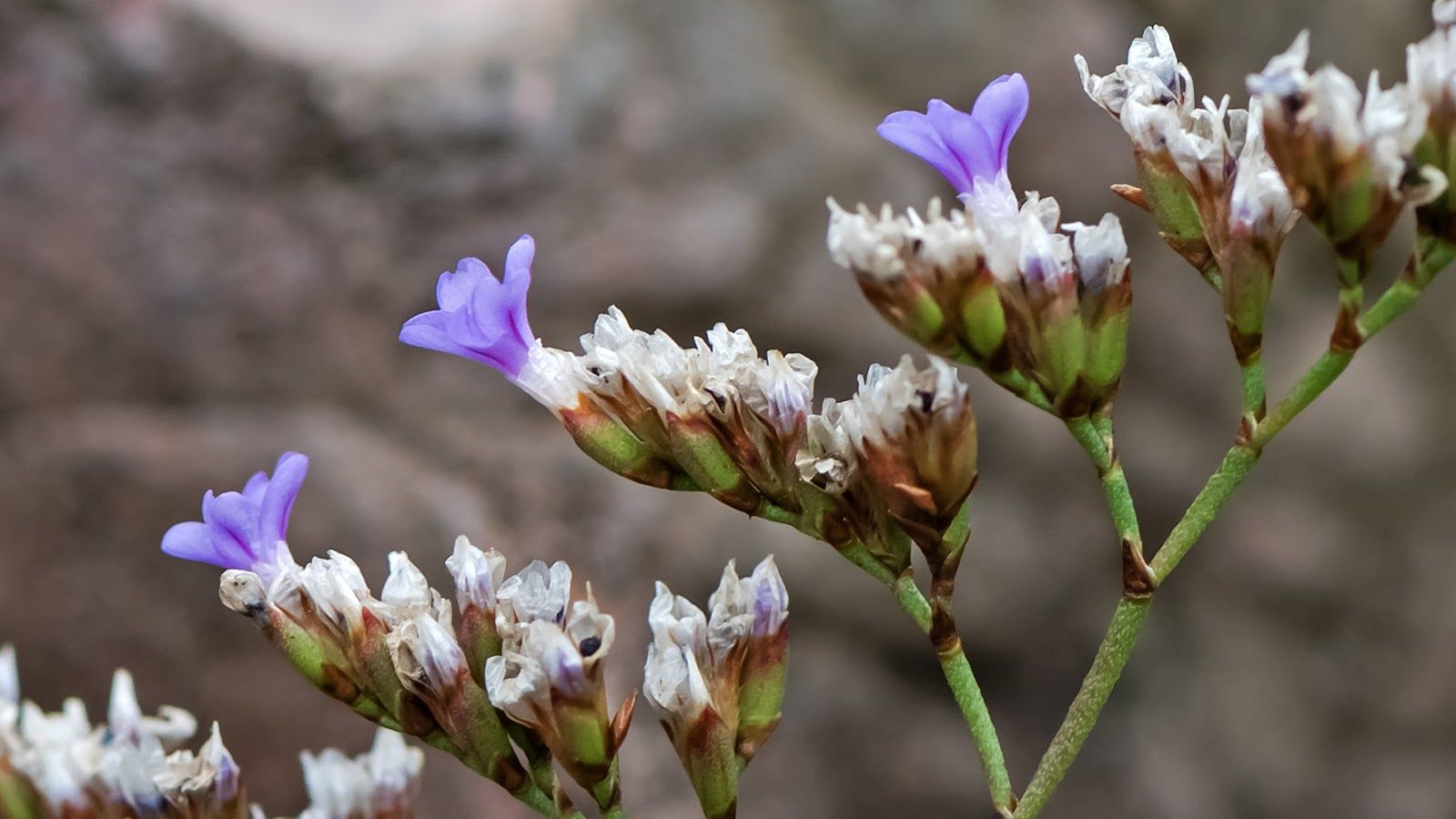Family: Plumbaginaceae
Author: (G.E.Sm.) C.E.Salmon
Bibliography: J. Bot. 45: 24 (1907)
Year: 1907
Status: accepted
Rank: species
Genus: Limonium
Vegetable: False
Observations: W. Europe to Morocco
Description
Rock sea-lavender, scientifically known as Limonium binervosum, is a fascinating plant species belonging to the Plumbaginaceae family. This perennial herb is native to Western Europe and extends its presence all the way to Morocco, flourishing particularly in coastal regions.
Limonium binervosum was first described in detail in the early 20th century, with a notable publication appearing in the Journal of Botany in 1907 under the authorship of the renowned botanists, George Edward Smith and Charles Edgar Salmon. The plant is well-regarded for its resilience and ability to thrive in saline environments, often found gracing the rocky shores and saltmarshes with its attractive clusters of small, papery flowers.
The Rock sea-lavender exhibits a unique floral display characterized by its delicate lilac to white blooms, which form dense inflorescences atop slender, wiry stems. These stems rise from a hardy rosette of lance-shaped leaves, which are typically leathery and grey-green in color, providing the plant with significant resistance to the salty conditions of its native habitat.
Ecologically, Limonium binervosum plays a vital role in its environment. It not only adds aesthetic value to marine landscapes but also supports a variety of pollinators, including bees and butterflies, which are drawn to its nectar-rich flowers. As a coastal species, it contributes to soil stabilization and helps prevent erosion along shorelines, making it an important plant for ecosystem maintenance.
Enthusiasts and botanists often seek out Rock sea-lavender for its ornamental value in gardens designed with maritime themes or for xeriscaping, given its drought-tolerant nature. Its distinctive appearance and hardiness make it both a practical and beautiful addition to landscapes.
In summary, Limonium binervosum, or Rock sea-lavender, is a notable plant from the Plumbaginaceae family, recognized for its hardiness and beauty in coastal environments from Western Europe to Morocco. Documented in scientific literature since the early 1900s, it continues to captivate both nature lovers and scientists with its ecological importance and ornamental appeal.
Common Names
Deu: felsen-strandflieder
Eng: rock sea-lavender
Nld: kliflamsoor
Cym: lafant y morgeigiau, lafant y morgreigiau, lafant-y-môr y creigiau, llemyg y morgreigiau
En: Rock Sea-lavender
Nl: Kliflamsoor, Westeuropees Lamsoor
Fr: Statice de Salmon, Statice de l’ouest, Statice de Dodart, Limonium de Salmon
De: Felsen-Strandflieder, Westeuropäische Strandnelke
Cy: Lafant y Morgeigiau, Lafant y Morgreigiau, Lafant-y-Môr y Creigiau, Llemyg y Morgreigiau
: Rock sea-lavender
Synonyms
- Limonium salmonis ((Sennen & Elias) Pignatti)
- Statice occidentalis (J.Lloyd)
- Statice binervosa (G.E.Sm.)
- Statice dodartii (Girard)
- Statice bubanii (Girard)
- Statice bayonnensis (Gren. ex Boiss.)
- Limonium occidentale ((J.Lloyd) Kuntze)
- Statice dodartii subsp. occidentalis ((J.Lloyd) Bonnier & Layens)
- Limonium binervosum subsp. occidentale ((J.Lloyd) P.Fourn.)
- Limonium binervosum subsp. dodartii ((Girard) P.Fourn.)
- Limonium dodartii ((Girard) Kuntze)
Distribution
- France (native)
- Germany (native)
- Great Britain (native)
- Ireland (native)
- Morocco (native)
- Portugal (native)
- Spain (native)
Additional Images
Flower
Taken Aug 3, 2021 by amrein nicole (cc-by-sa)
Taken Aug 25, 2022 by astrobio . exe (cc-by-sa)
Taken Jun 5, 2022 by Nathalie Potel (cc-by-sa)
Taken Jul 2, 2022 by Alison Richards (cc-by-sa)
Taken Sep 3, 2022 by Jean-Marie Frenoux (cc-by-sa)
Habit
Taken Aug 1, 2021 by Gervais Théo (cc-by-sa)
Taken May 20, 2014 by Tela Botanica − liliane pessotto (cc-by-sa)
Taken May 20, 2014 by Tela Botanica − liliane pessotto (cc-by-sa)
Taken Jun 23, 2016 by Tela Botanica − Liliane ROUBAUDI (cc-by-sa)
Taken Jun 5, 2022 by Nathalie Potel (cc-by-sa)
Leaf
Taken Oct 26, 2022 by Tristan Jaton-Maria (cc-by-sa)
Taken May 23, 2022 by jean-jacques kelner (cc-by-sa)
Taken Jun 23, 2016 by Tela Botanica − Liliane ROUBAUDI (cc-by-sa)
Taken Aug 25, 2022 by astrobio . exe (cc-by-sa)
Taken Jun 5, 2022 by Nathalie Potel (cc-by-sa)
Fruit
Taken Apr 6, 2022 by Alexandre Crégu (cc-by-sa)
Taken Oct 26, 2022 by Tristan Jaton-Maria (cc-by-sa)
Taken Oct 26, 2022 by Tristan Jaton-Maria (cc-by-sa)
Other
Taken Jan 1, 1970 by Photoflora – L’Abbé COSTE (©)
Taken Aug 15, 2004 by Photoflora – Jean-Luc TASSET (©)
Taken Aug 15, 2004 by Photoflora – Jean-Luc TASSET (©)
Taken Sep 18, 1876 by Tela Botanica − Herbier PONTARLIER-MARICHAL (cc-by-sa)
Taken Jul 31, 1880 by Tela Botanica − Herbier PONTARLIER-MARICHAL (cc-by-sa)
Bark
Taken Jun 18, 2018 by Ricardo Aperador Rubio (cc-by-sa)

© copyright of the Board of Trustees of the Royal Botanic Gardens, Kew.

© copyright of the Board of Trustees of the Royal Botanic Gardens, Kew.

© copyright of the Board of Trustees of the Royal Botanic Gardens, Kew.
Sources
- WFO (No URL)
- IPNI (No URL)
- GBIF (https://www.gbif.org/species/9035514)
- POWO (http://powo.science.kew.org/taxon/urn:lsid:ipni.org:names:686665-1)
- PlantNet (https://identify.plantnet.org/species/the-plant-list/Limonium binervosum (G.E.Sm.) C.E.Salmon)
Specifications
Growth habit>: Forb/herb
Growth
Ph maximum: 7.5
Ph minimum: 7.0
Light: 8
Atmospheric humidity: 8
Bloom months: [‘jun’, ‘jul’, ‘aug’, ‘sep’]
Soil nutriments: 5
Soil salinity: 7
























